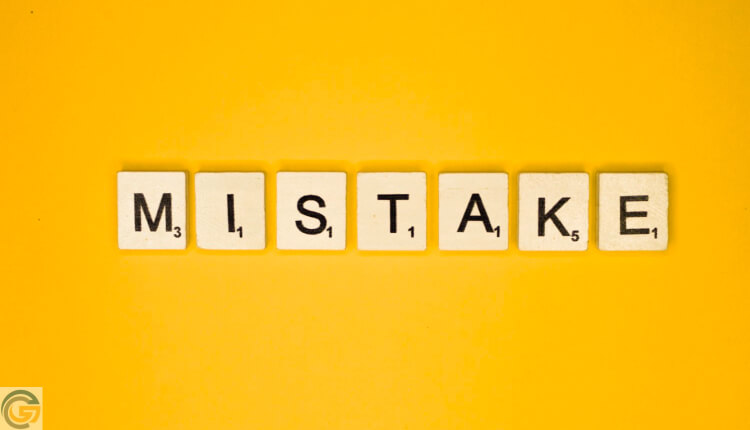What is Private Mortgage Insurance on Conventional Loans

Conventional loans require private mortgage insurance when the borrower’s equity in the home is less than 20%, which also means the down payment is less than 20% of the home’s purchase price. Once you’ve reached a certain level of equity in your home, you can cancel private mortgage insurance. In the following paragraphs, we will cover the the general steps to cancel private mortgage insurance on conventional loans:
Understand the Requirements of Private Mortgage Insurance
Familiarize yourself with the specific requirements of your loan and the terms of your PMI. Different lenders may have slightly different rules. Federal law mandates that PMI automatically cancels when you reach 78% loan-to-value (LTV) based on the original property value.
You can request automatic cancellation once you reach this threshold. You can request private mortgage insurance cancellation when you reach 80% LTV.
The lender may have specific requirements to confirm the current property value, such as a good payment history and an appraisal. The duration for which you have to pay private mortgage insurance (PMI) depends on several factors, primarily the type of mortgage and the loan-to-value (LTV) ratio at the time of obtaining the loan.
Fannie Mae and Freddie Mac Private Mortgage Insurance Premium
For conventional loans, private mortgage insurance is often required until the homeowner has at least 20% equity in the property. This can happen through a combination of paying down the mortgage balance and property value appreciation. Some lenders may automatically cancel the private mortgage insurance when the loan-to-value ratio reaches 78%, as long as the homeowner is current on mortgage payments.
Mortgage Insurance Premium Guidelines on Government Loans
If you have an FHA loan, the rules are a bit different. For loans with an initial LTV ratio of 90% or higher, you are required to pay mortgage insurance for the entire loan term. For loans with an initial LTV ratio less than 90%, the mortgage insurance premium (MIP) is required for 11 years.
The U.S. Department of Agriculture (USDA) and Veterans Affairs (VA) loans may have their own mortgage insurance premium or funding fee requirements, but the rules can vary.
VA loans, in particular, do not require monthly mortgage insurance. It’s crucial to check with your lender and carefully review your mortgage agreement to understand the specific terms and conditions regarding PMI for your loan. Some borrowers choose to refinance their mortgages once they have sufficient equity to eliminate the need for PMI, while others wait for automatic cancellation based on loan-to-value ratios. Keep in mind that laws and regulations may also impact the duration of the private mortgage insurance payments.
Key To Getting Rid of Private Mortgage Insurance
Accelerate your mortgage payments to build equity more quickly. This can help you reach the necessary LTV ratio sooner. If you’ve made home improvements that increase the value of your property, consider getting a new appraisal. A higher property value may help you reach the LTV threshold sooner.
Ensure that you have a good payment history with no late payments. Some lenders may require a clean payment history before considering PMI cancellation.
Keep an eye on the real estate market in your area. If property values have increased significantly, your LTV may naturally decrease, making it easier to reach the cancellation threshold. Once you believe you’ve met the requirements for PMI cancellation, contact your lender. They will provide the steps and documentation needed to initiate the cancellation process.
Refinancing FHA to Conventional Loan To Get Rid of Private Mortgage Insurance
Low mortgage rates and equity in your home will play a vital role in refinancing your home to get rid of your private mortgage insurance. If you can’t meet the cancellation requirements through the steps above, consider refinancing your mortgage. You can secure a new loan without private mortgage insurance with a higher home value or a larger down payment. Remember that the rules regarding private mortgage insurance cancellation may vary, so it’s essential to check with your lender and review your loan documents for specific information. Refinancing from an FHA to a conventional loan can be a smart financial move if you want to get rid of the private mortgage insurance (PMI) associated with FHA loans. In the following paragraphsm we will discuss the general steps you might consider to eliminate private mortgage insurance.
Understand FHA and Private Mortgage Insurance
FHA loans often have mortgage insurance that lasts for the life of the loan if the down payment is less than 10%. If your down payment was 10% or more, the mortgage insurance can be removed after 11 years. As with any refinance, be prepared to provide documentation such as income verification, credit history, and property information. Contact different lenders to get quotes for conventional loans. Compare interest rates, closing costs, and terms to find the best deal.
Home Equity Determines Private Mortgage Insurance
Home equity refers to the difference between the current market value of a home and the outstanding balance on any mortgage or other liens secured by the property. In simpler terms, it represents the portion of the home that the homeowner truly owns outright. We will cover the basic formula to calculate home equity:
Private mortgage insurance is typically required when the down payment on a home is less than 20% of the property’s appraised value.
Home Equity=Current Market Value of Home−Outstanding Mortgage BalanceFor example, if your home is worth $300,000 in the current market, and you still owe $200,000 on your mortgage, your home equity would be $100,000.
How Can Home Equity Increase
Home equity can increase in two ways: If the market value of your home increases, your home equity increases. This can happen due to factors such as improvements you make to the property, renovations, or general appreciation in the real estate market. As you make mortgage payments, you are gradually paying down the principal amount you owe. This reduces the outstanding balance and increases your home equity. Home equity is an important financial asset for homeowners. It can be utilized in various ways, such as borrowing against the equity in your home.
Home Equity Lines of Credit (HELOC)
A HELOC is a revolving line of credit based on the equity in your home. Homeowners need home equity in order to be eligible for a HELOC or a second mortgage. When you sell your home, the equity becomes cash. Using the equity to fund renovations that can further increase the home’s value.
It’s worth noting that while home equity can be a valuable financial resource, it’s important for homeowners to use it wisely and be aware of the potential risks, especially when taking out loans secured by their homes.
Ensure that you have sufficient equity in your home. Conventional loans usually require at least 20% equity to avoid private mortgage insurance, but some lenders may allow you to have less. Verify that your credit score is in good shape. Conventional loans typically have stricter credit requirements than FHA loans. Confirm that your loan-to-value ratio is below 80%. LTV is the amount of the loan compared to the value of the property. An loan-to-value below 80% usually eliminates the need for private mortgage insurance on conventional loans.
How to Apply for a Conventional Loan
Borrowers 9f conventional loans need to follow Fannie Mae or Freddie Mac guidelines. Once you’ve chosen a lender, submit a loan application. The lender will evaluate your financial situation and the property to determine if you qualify for the conventional loan. The lender will likely require a new appraisal to determine the current value of your home. If your loan is approved, you’ll go through the closing process. This involves signing the necessary paperwork to complete the refinance.
Cancel FHA Mortgage Insurance Premium
HUD, the parent of FHA, has a one time upfront FHA mortgage insurance premium of 1.75% and an annual 0.55% annual FHA annual mortgage insurance premium for the life of the loan. Once your new conventional loan is in place, contact your FHA lender to officially cancel the FHA mortgage insurance premium. Stay in communication with your new lender and monitor the progress of the loan process. Keep in mind that the specific requirements and processes can vary between lenders, so it’s important to discuss your situation with potential lenders and get personalized advice based on your financial circumstances. It’s also recommended that you consult with a financial advisor or mortgage professional to ensure that refinancing is the right decision for you.






Responses